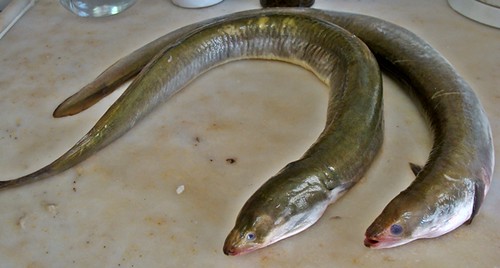
1. 33 Different Seal Species, Each With Their Own Unique Characteristics
Adult seals can vary drastically in size, with some species weighing as little as 130 lbs while others can reach an astonishing 8,000 lbs or more. This remarkable range of sizes is due to the fact that there are over 33 species of seals, each with their own unique characteristics. The largest species, the elephant seal, can reach lengths of up to 16 feet and weigh up to 8,000 lbs, while the smallest species, the Baikal seal, typically weighs around 130 lbs and is only about 4 feet long.
Also → Bulgaria's Black Sea Seals
Advertisement2. 32 Different Seal Species
With 32 known species, seals come in a variety of sizes. The largest of these is the southern elephant seal, which can grow up to an impressive 13 feet in length. On the other end of the spectrum, the smallest species is the Galapagos seal, which typically reaches a maximum of 4 feet in length.
Also → Polar Bears: apex predators of the Arctic
3. A Species of Wonder
Seals are a truly remarkable species, found in a wide variety of habitats across the globe. From the icy waters of the Polar Regions to the warm, tropical waters of the Caribbean, seals can be found in abundance. They are highly adaptable creatures, able to survive in a range of temperatures and environments, and are a vital part of the marine ecosystem.
Also → The Common Squid: A Fascinating Creature with a Short Lifespan
4. No Tear Ducts, Just Shakes and Flicks
Seals may look like they are crying when observed on land, but this is simply an illusion; they do not have tear ducts. Instead, the moisture that appears to be tears is actually just water from the ocean that has been trapped in their fur. This is why seals are often seen shaking their heads and flicking their fur when they come out of the water - they are simply trying to get rid of the excess moisture.
Also → Australia's Marine Wonders
Advertisement5. Seals keep warm with their blubber
Seals have a unique adaptation to the cold ocean waters they inhabit: a layer of blubber beneath their skin. This blubber acts as an insulator, trapping heat and keeping the seal warm in even the coldest of waters. It also serves as a source of energy, providing the seal with the necessary calories to survive in its environment. The blubber also helps the seal to stay buoyant, allowing it to move more easily through the water.
Also → Walruses are Massive Marine Mammals
6. Adapted to their aquatic environment
Seals are fascinating creatures, with their internal ears, tapered body, and webbed digits resembling paddles. These features make them perfectly adapted to their aquatic environment, allowing them to steer and maneuver with ease. Their short tail and webbed hands and feet act as powerful flippers, propelling them through the water with remarkable agility.
Also → Dolphins' Unique Adaptation Keeps Them Comfortable in Cold Waters
7. Seals are hunted for their fur, skins, and oil
Seals are hunted for a variety of reasons, including their fur, skins, and oil. The fur is used to make clothing and accessories, while the skins are used to make leather goods. The oil, which is extracted from the blubber of the seal, is used in a variety of products, including cosmetics, pharmaceuticals, and even food. Unfortunately, this hunting has led to a decrease in the seal population, making it an endangered species.
Also → Sting Rays: A Beautiful and Fascinating Species
Advertisement8. The Furry Friends of the Sea
Seals are fascinating creatures that come on shore to breed and give birth to their pups. The males are known as Bulls, while the females are referred to as Cows. During the breeding season, the Bulls will often fight for dominance and the right to mate with the Cows. The Cows will then give birth to their pups, usually in the springtime, and will nurse them until they are ready to venture out into the ocean on their own.
Also → Crabs: Fascinating Species in Many Habitats
9. Seals rely on their whiskers to hunt their prey
Seals are carnivorous animals that rely on their highly sensitive whiskers to detect the vibrations of their prey, which includes fish, squid, and other types of meat. They use their whiskers to locate their prey in the water, and then they use their powerful jaws and sharp teeth to capture and consume it. Seals are well-adapted to their aquatic environment, and their whiskers are an essential part of their hunting strategy.
Also → Gharials: A Species Well-Adapted to Life in the Water
10. The Deep-Diving Mammals
Seals are remarkable creatures, possessing more blood per weight than most other mammals. This extra blood supply allows them to dive to incredible depths of up to 1,000 feet in the ocean in search of food. This is made possible by their unique ability to store oxygen in their muscles and blood, allowing them to stay underwater for extended periods of time.









